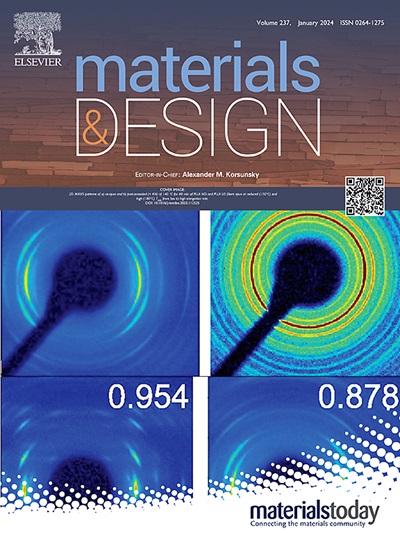Joining Inconel 718 and GRCop42: A framework for developing transition compositions to avoid cracking and brittle phase formation
IF 7.6
2区 材料科学
Q1 MATERIALS SCIENCE, MULTIDISCIPLINARY
引用次数: 0
Abstract
Distinct regions of high temperature strength and high thermal conductivity are required for components such as combustion chambers. Inconel 718 and GRCop42 are commonly used for such components. However, the bimetallic joining of these alloys has been shown to result in a liquid miscibility gap at the interface, which at select compositions can lead to brittle phase formation and cracking. In this work, CALPHAD modeling is used to predict regions of brittle phase formation in the Inconel 718–Ni–GRCop42 and Ni–Cu GRCop42 multi-component ternary systems, with experimental validation of the modeling provided by arc melting. Through characterization of arc melted sample microstructure combined with CALPHAD modeling, the solidification paths throughout the system are elucidated and a brittle phase and crack free compositional region is identified. Based on these results, a compositionally graded path consisting of two transition compositions is identified. Powder Laser Directed Energy Deposition is used to fabricate the Inconel 718–GRCop42 joint with the identified transition compositions, and the joint is subject to characterization in terms of composition profile, defects, grain morphology, present phases and microhardness. Results confirm the transition compositions circumvent brittle phase formation found in bimetallic Inconel 718–GRCop42 joints, thus overcoming the thermodynamic barrier of bimetallic joining.

求助全文
约1分钟内获得全文
求助全文
来源期刊

Materials & Design
Engineering-Mechanical Engineering
CiteScore
14.30
自引率
7.10%
发文量
1028
审稿时长
85 days
期刊介绍:
Materials and Design is a multi-disciplinary journal that publishes original research reports, review articles, and express communications. The journal focuses on studying the structure and properties of inorganic and organic materials, advancements in synthesis, processing, characterization, and testing, the design of materials and engineering systems, and their applications in technology. It aims to bring together various aspects of materials science, engineering, physics, and chemistry.
The journal explores themes ranging from materials to design and aims to reveal the connections between natural and artificial materials, as well as experiment and modeling. Manuscripts submitted to Materials and Design should contain elements of discovery and surprise, as they often contribute new insights into the architecture and function of matter.
 求助内容:
求助内容: 应助结果提醒方式:
应助结果提醒方式:


